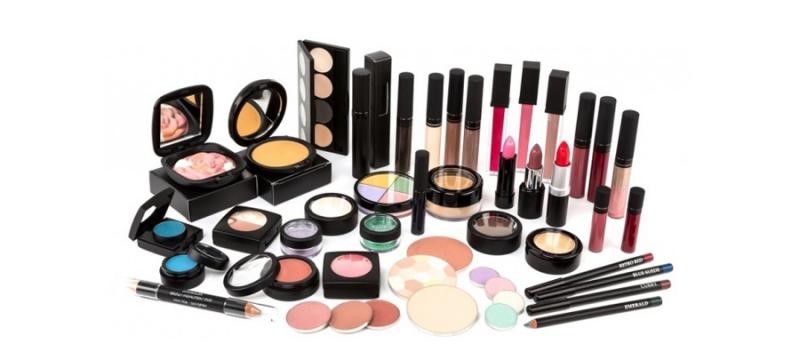We all use various Colours of eyeshadows, blushes, lipsticks, etc. These cosmetic products enhance the look with their light and dark Colours. But have you wondered how these Colours are made? Or what are they made of?
Cosmetic pigment Colours have been a part of human civilization for a very long time. The first people to invent makeup-making methods were the ancient Egyptians and Sumerians. Back in the day, they used clay, semi-precious stones, paprika, turmeric, seaweed extract, and many other organic ingredients to create a wide range of vivid hues.
However, the substances that are used to Colour cosmetics have evolved over time. In the 1800s, an increase in hazardous lead and copper mixtures were seen. This was just a brief history of how cosmetics Colours have evolved over time. This article will teach you more about Colour pigments and where they come from.
Cosmetic Pigment: What is it?
Cosmetic pigments are Colourants used for making cosmetics because they are safe to use. They often improve the product’s aesthetics and give them an appealing look. In addition to this, when people wear these cosmetics, their beauty is enhanced by these bright shades. There are several types of cosmetics Colourants used these days. But, the safest & effective pigments that can be used are organic, which are sold by certified & reputed companies, such as Neelikon, as they provide:
- COA – Certificate of Analysis
- CAS – Chemical Abstract Service
- MSDS – Material Safety Data Sheet
- INCI – International Nomenclature Cosmetic Ingredient
However, we must remember that glitter is not a cosmetic pigment. It gives effect and shines to the wearer.
We can classify the cosmetic pigment as:
- Lip Safe
- Eye Safe
What Kind of Colours are Used in Cosmetics?
Well! There are two types of Colours used in cosmetics – Organic Colours and Inorganic Colours. These are further divided into subcategories:
Botanicals
- Botanicals are the best and safe to use on the skin.
- These are natural Colour additives used in cosmetics.
- The two most popular Colours are henna and beetroot.
- They don’t stick well with makeup.
Synthetic Dyes
- These are petroleum oil and derivatives of coal tar that are chemically purified because of the hazardous heavy metals they contain.
- Synthetic dyes have bright hues.
Lakes
- Lake Colours are more stable than other water-soluble dyes.
- Binding reactions of metallic salt and dye produce these Colours.
- Due to its aluminum content, it gives out bright Colours.
- Lake Colours are extremely versatile and adapt easily.
Mineral Compounds
- They are safer to use.
- They stick well with makeup. Hence, they are used in cosmetics.
- Getting a brighter Colour with mineral compounds can be difficult.
- Mineral compounds are better options than synthetic Colours.
- Examples of mineral compounds are – mica, oxides, and ultramarines.
- Due to their high metal content, these Colours are produced synthetically in the lab.
Popular Colours Used in Beauty Products
Colours are essential in defining and determining an individual’s lifestyle and personality. To understand the Colours used in beauty products, you must know a few Colour terminologies and categories.
Colour Terminologies
- Hue
Pure Colour form (red, orange, yellow, green, blue, purple, etc., and their mixtures)
- Saturation
Depth of Colour. The Colours seem purer as saturation levels rise. The Colours become washed out as the saturation drops.
- Tint
Hue + White
- Shade
Hue + Black
- Tone
Hue + Grey
Colour Categories:
- Warm Colours
Red, orange, yellow, and shades of these hues (such as burgundy and pink).
- Cool Colours
Green, Purple, Blue, and their variations.
- Neutral Colours
Brown, Black, White, and their shades.
The Colours are categorized because they differ according to each individual’s skin tone. This is done mainly when a brand produces foundations, concealers, and face powders.
Now, the most used Colours in beauty products are as follows (with meaning):
- Red Palette
Red is seen as bold and royal sometimes. It is the Colour of excitement and passion.
- Green Palette
Green is the Colour of nature, which also resembles tranquility, relaxation, safety, etc.
- Yellow Palette
It gives out a youthful and ‘a sunny day’ vibe.
- Orange Palette
Mimosa is the first word that comes to mind when we hear or see ‘Orange.’ It signifies energy and enthusiasm, among many other things.
- Blue Palette
Blue gives out a peaceful feeling to some, while to some, it is a vacation vibe.
- Purple Palette
It gives a hint of luxury and uniqueness.
- Black
Often associated with higher prices, Black is seen as luxe products, symbolizing bold and bravery to some.
- White
It projects the feeling of purity and creativity.
Conclusion
We live in a world where Colours allure people. Colour pigments in cosmetics and beauty products play a very important role in branding & enhancing the appeal wherever they are used. The Colours used in beauty products give various choices to the consumer that will go with their attire. Also, remember that the Colourant used for lips might differ from those used for eyes or cheeks.
Neelikon offers the highest quality Synthetic organic pigments and lakes prepared with integrated and advanced technology to achieve the softest and finest particles of pigment Colours. We strive to provide dyes, lakes, and pigments that comply with legal standards.
For more information please contact us at info@neelikon.com.


